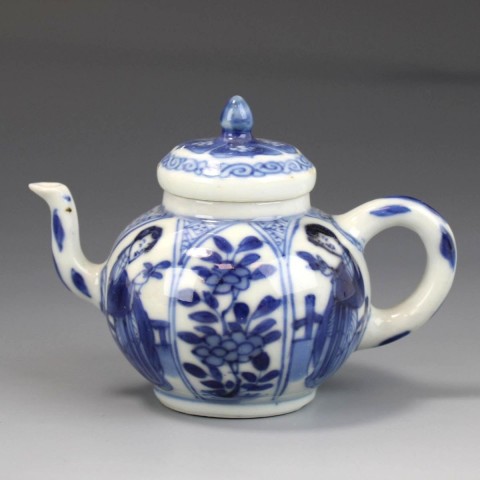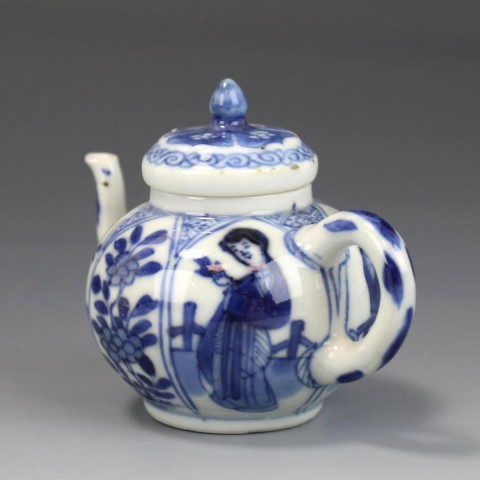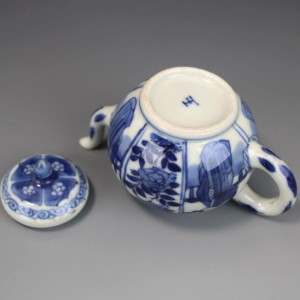BG70
Further images
The compressed globular body with, with a gently curving spout and a slender loop handle, decorated in shades of underglaze blue, each petal-shaped panel alternately painted with flowers and 'Long Elizas', the cover with a conical finial encircled by stylised petals within a spiral-work border, the base glazed, with a single yu 'jade' character mark.
Literature
Footnote: There is a group of three miniature blue and white teapots similarly decorated with ‘Long Elizas’ and with a ‘yu’ mark on the base in the collection of the Metropolitan Museum, New York, also dated to the Kangxi period (museum number 1975.1.1712, Robert Lehman Collection 1975).
For a further Kangxi miniature teapot, also in blue and white and with 'Long Elizas' but of a different form, see the collection of the Victoria and Albert Museum, London (C.585-1910. Salting Bequest, 2009). They suggest that small teapots such as ours may have been more of a toy than a functioning teapot. Wealthy European women, especially in the Netherlands, furnished doll's houses with miniature versions of their own furnishings.
In the late 17th and early 18th centuries, miniature versions of Chinese blue-and-white porcelain forms were highly prized in Europe. These miniatures would be placed in ornate ‘porcelain cabinets’, alongside larger ceramics. An example of such a display can be viewed at the Gemeentemuseum, The Hague, where an elaborate 18th century dollhouse contains its own miniature ‘porcelain room’.
The Yu, 'jade', character mark seen here on the base is traditionally called the F-mark in the Netherlands and is very common on good-quality blue and white Kangxi export porcelain, see Jörg, C.J.A. and J. van Campen, Chinese Ceramics in the Collection of the Rijksmuseum, Amsterdam. The Ming and Qing Dynasties, p.115.






